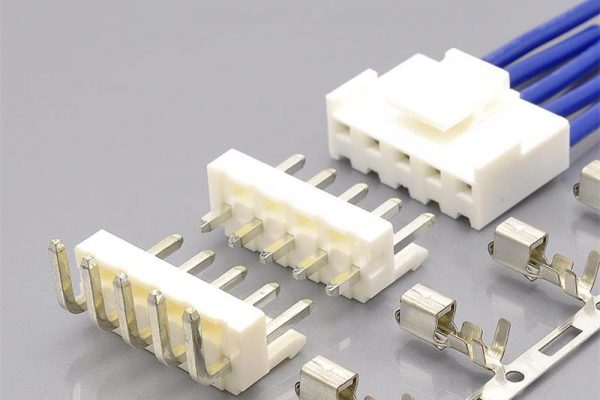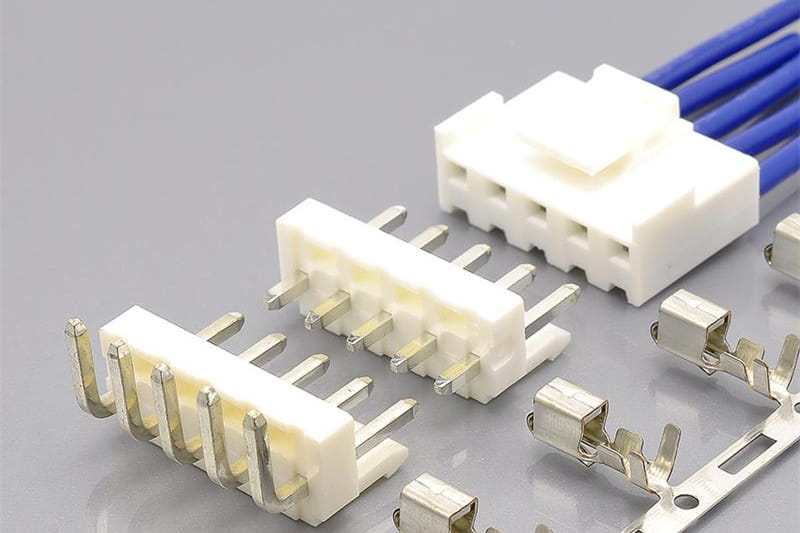The VH connector is a popular high-performance power connector used in many electronic devices. Its stable electrical performance and durability make it a top choice in various industries. However, users often face compatibility issues during use. These problems can affect device operation or even lead to system failures. Today, Konnra will discuss common VH connector compatibility problems and offer practical solutions to help you avoid potential headaches.

What Are VH Connector Compatibility Issues?
Compatibility issues arise when the VH connector doesn’t fit or function correctly with other components or devices. Common compatibility problems include:
- Size mismatch: The plug and socket don’t fit due to different dimensions.
- Electrical specification mismatch: Voltage or current ratings don’t align, causing overheating or failure.
- Poor terminal contact: Terminal materials or shapes don’t match, leading to unstable connections.
- Environmental incompatibility: The connector doesn’t function properly in certain environments like high temperatures or humidity.
These issues can affect your system’s stability and even pose safety risks. Ensuring VH connector compatibility is crucial for smooth operation.
1. How to Choose the Right VH Connector Specifications
The first step in resolving compatibility issues is choosing the correct specifications. VH connectors come in various types, each designed for different current and voltage requirements. Here are key steps to find the right one:
A. Determine Current and Voltage Requirements
Every device has specific electrical needs. When selecting a VH connector, ensure it supports your device’s current and voltage. Most VH connectors are rated for 5 amps and 250 volts, but check your device’s power requirements to choose the appropriate model.
If your device demands higher current, opt for a connector with a higher rating.
For voltage above 250 volts, choose a connector that can handle it.
Tip: Incorrect electrical specifications may cause your device to malfunction or even pose safety hazards.
B. Check Terminal Material and Shape
Terminal material directly affects resistance and durability. VH connectors typically use copper alloy terminals, which offer low resistance and durability. If the terminals are made from incompatible materials, you may experience poor contact, overheating, or device damage.
Also, ensure the terminal shapes are compatible. Different models may have slight differences in terminal design. The plug and socket should perfectly match to avoid compatibility problems.
C. Verify Plug and Socket Pitch
The standard terminal pitch for VH connectors is 3.96mm. This distance ensures a snug fit between the plug and socket. If the pitch doesn’t match, the electrical connection will fail.
Looking for reliable VH connectors? Check out our connectors for sale to find high-quality options that meet your needs. Visit us today!
2. How to Address Environmental Compatibility Issues
Beyond electrical specs, environmental compatibility is another crucial factor. Different applications require connectors that can handle various conditions, such as extreme temperatures or moisture. If the connector isn’t suited to the environment, it may fail.
A. Temperature Resistance
Some devices operate in extreme heat or cold. Most VH connectors can operate between -25°C and 85°C. If your device requires higher or lower temperatures, choose a model with better temperature resistance.
High temperatures: Heat may cause plastic parts to deform. Select connectors with high-heat-resistant materials.
Low temperatures: Cold conditions can make plastic brittle, reducing durability during insertion and removal.
B. Moisture Resistance
Moisture can infiltrate connectors, causing short circuits or corrosion. To avoid this, use VH connectors with higher waterproof ratings, ensuring they work reliably in humid environments.
Some VH connector models come with waterproof designs that meet IP ratings, making them suitable for outdoor or high-humidity applications.
3. How to Fix Poor Terminal Contact
Poor terminal contact is a frequent compatibility issue. It often results from improper terminal design or mismatched materials. Here are ways to fix this problem:
A. Choose Reliable Products
There are many low-quality connectors on the market, including counterfeits. These products may use inferior materials, leading to poor electrical contact. Always choose VH connectors from trusted brands and suppliers to avoid poor contact issues.
B. Regular Maintenance and Inspection
Even high-quality VH connectors can experience terminal oxidation or wear over time. Regularly inspect the connector, especially the terminals, for signs of damage or poor contact. If you notice oxidation or corrosion, clean or replace the connector immediately.
Regular maintenance can prevent future contact issues and ensure long-term reliability.
4. How to Resolve Cross-Brand Compatibility Issues
VH connectors from different brands may have slight design variations, leading to compatibility issues when mixed. This is especially common when using a plug from one brand and a socket from another.
A. Stick to the Same Brand
To avoid cross-brand compatibility issues, use plugs and sockets from the same brand. This ensures they are designed to fit perfectly, preventing insertion difficulties or poor electrical contact.
B. Ensure Technical Specifications Match
If you must mix brands, carefully compare their technical specifications, particularly terminal size, pitch, and material. Even small design differences can cause compatibility issues.
As a trusted connectors manufacturer, we offer a wide range of compatible plugs and sockets to avoid cross-brand issues. Explore our products today!
5. How to Fix Insertion and Removal Force Problems
Insertion force refers to how tightly the plug and socket connect. Too much force can damage equipment, while too little can cause loose connections. VH connectors are generally designed for secure insertion, but issues may arise.
A. Adjust Insertion Force
If the insertion force feels too strong or weak, you can choose different terminal models. Some terminals are designed to optimize insertion force, offering smoother insertion while maintaining secure connections.
B. Use Lubricants
In some cases, you can use electrical-grade lubricants to reduce friction during insertion. However, be cautious when using lubricants as they can affect the electrical performance of some connectors.
Conclusion
To resolve VH connector compatibility issues, it’s essential to fully understand your device’s requirements and carefully review the connector’s technical specifications. By choosing the correct electrical ratings, ensuring secure terminal contact, and accounting for environmental factors, you can prevent most compatibility challenges.
If you’re looking for a reliable solution, consider the KR3961 Series VH 3.96 DIP Wire to Board Connector. This connector is designed to provide secure, high-performance connections, making it an excellent choice for a wide range of applications.
Visit Konnra’s website to learn more about the **KR3961 Series** and explore other top-quality connectors and wiring harness solutions tailored to your needs!










